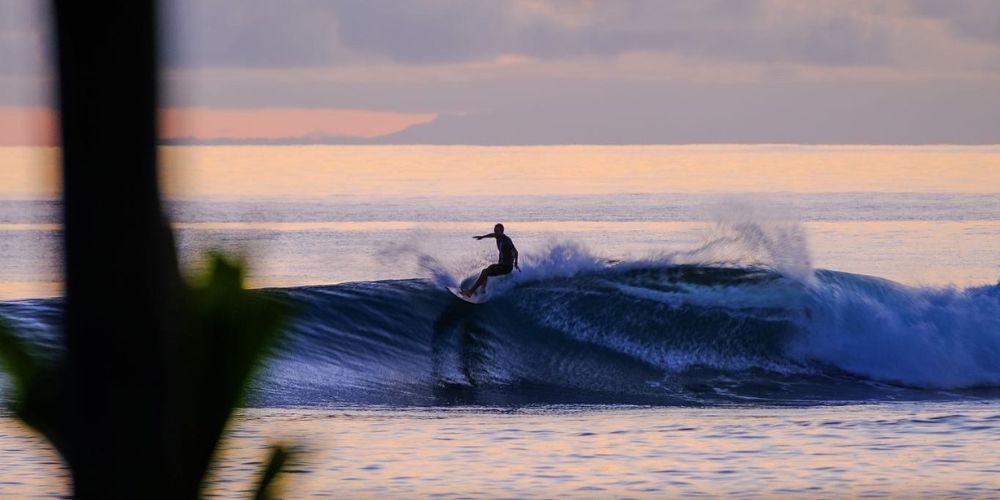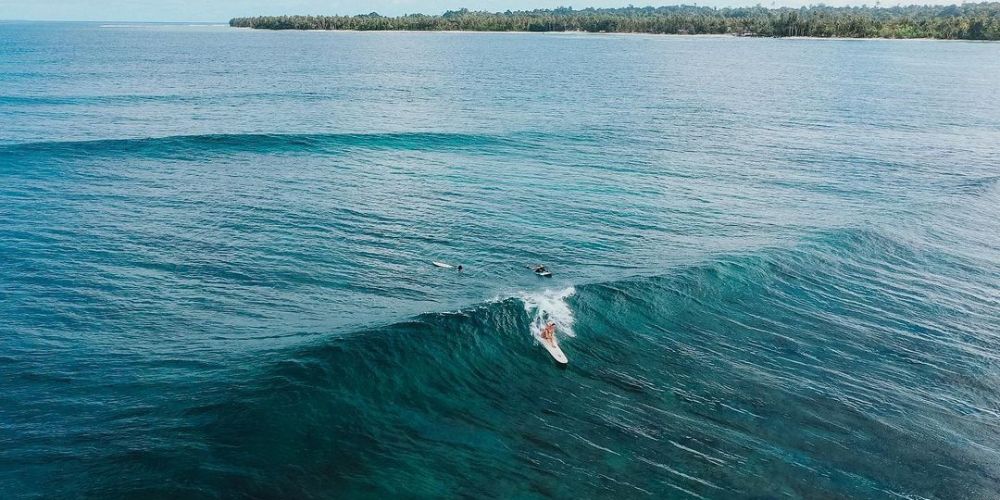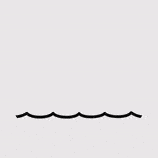Surfing barrels waves take skill and courage. Those willing to paddle in often enjoy some of the best tubes of their lives. We’ve outlined several of the world’s best waves for epic barrels and unforgettable rides.
Here are the best barrels around the world:
HT’s Lance’s Right, Mentawai, Indonesia

Starting with HT’s very own Lances Right, a world-renowned surf spot in Indonesia, the crown jewel for surfers – Mentawai. It is a powerful challenging right-hand wave that draws surfers attention from all over the world to put their skills to the test and experience the thrill of riding this iconic wave. With the consistent swell and offshore winds, surfing Lances Right is both challenging and rewarding.
Lances Right/HT’s is well known not only for its surf but also for its breathtaking natural beauty. The surrounding landscape is lush with tropical vegetation and crystal-clear waters, providing surfers and visitors with a breathtaking view.
Surfing Lances Right is an unforgettable experience for all who surf it, with its challenging wave and stunning natural surroundings.
To enjoy the finest right-handed waves in the world, visit Hollow Tree’s Resort. More on us later, now let’s get back to the best barreling waves around the world.
Pipeline, Oahu, Hawaii
Pipeline is one of the world’s most famous waves and one of the deadliest. It is known for heaving barrels, large crowds, shallow reefs, and challenging conditions.
The ability to surf Pipeline is an honor. The world’s best surfers from around the globe travel to the North Shore of Oahu, Hawaii, to surf “Pipe” during the winter swell season.
The wave breaks above a flat reef that has several large caverns. On its best days, Pipeline is an A-frame wave offering wide-open left and right-hand tubes.
The best conditions for surfing Pipe are Pacific swells in the WNW-NW direction. Swells with west angles tend to create the most hollow barrels. However, a slight change in wind or swell direction can transform the wave in a second, turning it into a heavy closeout that’s impossible to make.
Teahupo’o, Tahiti
Teahupo’o is often called the “heaviest wave in the world.” That’s because it’s an extremely powerful wedging wave that breaks over shallow reefs. The result is large, hollow barrels.
Like Pipeline, Teahupo’o attracts high-level surfers from around the globe. Teahupo’o is where surfing champions are crowned, and others battle serious injuries caused by the force of the wave and jagged reef underneath.
Cloudbreak, Fiji
Cloudbreak is a reef break located off a picturesque island in Fiji. It is a long, powerful, and hollow wave that can hold its shape on swells up to 20 feet.
Cloudbreak is widely considered one of the top 10 most challenging waves in the world for its fast barrels that break over shallow reefs. The wave gets shallower, faster, and more dangerous as it continues breaking, testing the skills of even the most advanced surfers.
Cloudbreak prefers long-period south/southwest swells of more than 17 seconds. The ideal wind is a trade wind from the east or southeast. Swells with more west provide the heaviest, most open tubes, while south swells feel more like a classic point break.
Shipstern Bluff, Tasmania

Shipstern Bluff is not as popular as Pipeline or Cloudbreak, but it’s equally challenging. This large, slabby, and dangerous wave is along the rugged southern coast of Tasmania. The barrel is big enough for a bus to pass through when it’s working perfectly.
Shipstern Bluff is especially challenging to surf due to an inside formation known as “the Step,” which drops off and often sends surfers flying over “the falls.” This wave sits way out to sea and is only accessible via a 30-kilometer boat or jet ski ride. For this reason and several reported shark sightings, Shipstern Bluff isn’t nearly as crowded as some other waves on this list.
Shipstern bluff works best on a Southwest swell with wind from the north. These conditions usually line up during March and in the fall.
Mavericks, California
Mavericks is a famous big wave location in Half Moon Bay, California. It’s known for pumping out giant, heavy waves that can get up to 60 feet or more in size.
Mavericks is dangerous, but the thrill is what draws big wave surfers from all over the world. Adding to the extreme force of this right-hand wave (with occasional lefts) are the fog, cold water, and regular shark sightings.
When a proper swell hits the rocky ledge underneath the break, Mavericks throw over, creating an A-frame wave with a heavy lip that can hold surfers under and be deadly. The best waves typically hit Mavericks from September to April with a west or west-northwest long-period swell.
G-Land, Java, Indonesia
G-Land is one of the most famous waves in Indonesia for its hollow barrels that can break for hundreds of meters. The wave is so long that its numerous sections have their own names.
There’s a reason G-Land is considered one of the world’s best left-hand waves. A 10,000-foot underwater drop-off combined with a coral reef shelf and perfect peninsula set the stage for a wave that provides freight train barrels for leg-burning distances.
G-Land is off the south coast of the island of Java in Indonesia. It prefers swells from the south and fires best at mid-tide.
Indonesia is a hotspot for supersucks-style waves, point breaks, beach breaks, and surf spots for all levels of wave riders. The experts at Hollow Tree’s Resort in the Mentawais connect surfers with countless world-class waves throughout Indonesia, including G-Land, Hollow Tree’s, Bintangs, Lance’s Left, and more.
HT’s is not your average surf resort; it’s a place where you can let go of all your worries and enjoy lively moments. Hollow Tree’s connects surfers with the best waves in the country, including the 10 world-class waves just a short bike or boat ride from the resort.
Contact our team of surf guides and experts at Hollow Tree’s to learn more about the best waves for your travel timeline, surfing level, and more.




